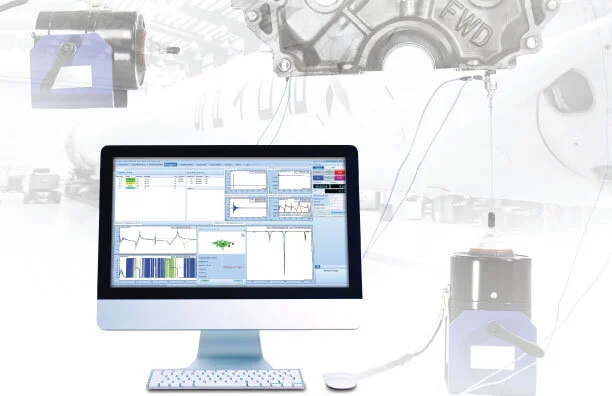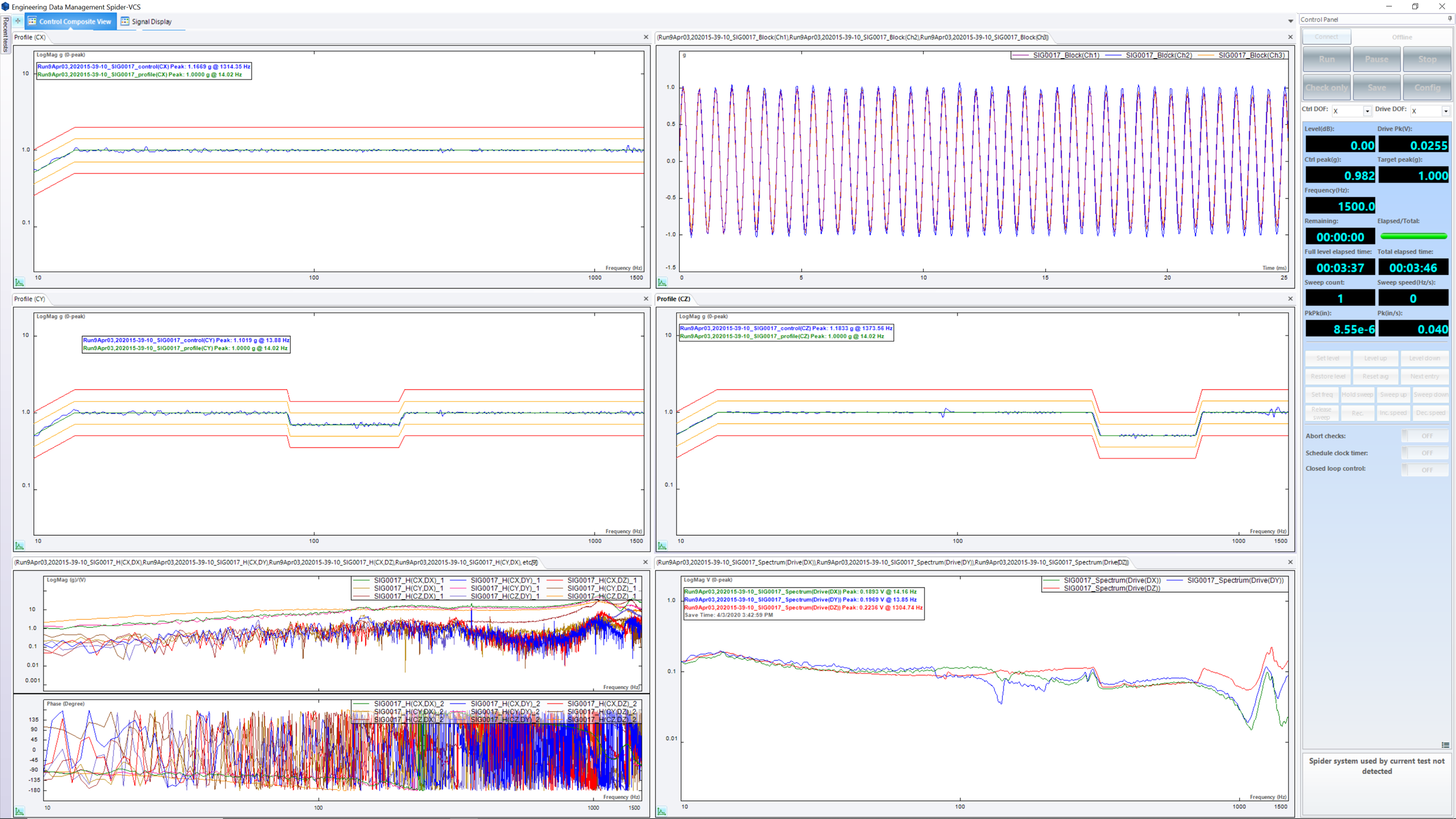PID control is a very simple and powerful method for controlling a variety of processes, including temperature. The acronym PID stands for “Proportional, Integral, and Derivative”.
Read MoreDigital Input and Output (DIO) is the most popular interface for communicating and interacting with external instruments. Each digital input and output channel has two states: high or low. The Spider can respond to the state of a digital input channel from an external instrument or send a digital output to an external instrument.
Read MoreA new and powerful addition to Crystal Instruments EDM software is enhanced support for load cells and other ratiometric sensors. The sensitivities of these sensors are dependent on the supplied excitation voltage, so it is crucial to provide precise excitation. Crystal Instruments’ latest software release of EDM 9.0 provides an effortless process to configure and setup load cells and other ratiometric sensors.
Read MoreEarthquake testing is a crucial process that is used to determine the seismic performance of a structure. The utilization of a physical testing method helps users better understand the complexity involved in earthquake forces. A shaker table is typically used to execute a physical method of testing. The results from earthquake testing are used to optimize the design and material properties of the unit under test.
Read MoreCrystal Instruments extends a hearty congratulations to Aakash Mange, recipient of the SAE International Arch T. Colwell Merit Award for his technical paper, “An Optical Based Technique to Obtain Vibration Characteristics of Rotating Tires”.
Read MoreModal testing and analysis are important processes that improve the design of a product. Therefore, it is crucial to ensure testing is carried out with optimal settings. The Shaped Random and Burst Shaped Random output excitation introduced by Crystal Instruments provides unique advantages such as a better estimation of the quality factor, damping and FRF amplitude. This indicates that the obtained modal parameters are more accurate. A modal test is carried out to examine the data to see the improvement in the results with these newly introduced techniques when compared to the conventional shaker excitation signals. The green curve shows the FRF obtained using the Shaped Random excitation and the blue curve shows the FRF obtained using the white noise excitation. As illustrated, the advantages of shaped peaks using the newly introduced approach leads to more accurate estimations of the quality factor, damping and FRF amplitude as discussed in the forthcoming sections.
Read MoreFeaturing the highest sampling rate provided in the industry at 256 kHz. Handheld battery powered system with wired & wireless network options and 20V input range. Sync between multiple devices. Choose the convenient portable model or industrial model for permanent mounting.
The Spider-20H, Spider-20HE, and Spider-20i received a hardware upgrade to support an impressive 256 kHz samping rate on all 4 input channels. It is the highest sampling rate offered in the market of compact analyzers. The high sampling rate is especially beneficial for measuring high orders and transient capture in blast tests, pyroshock events, drop shock tests, crash tests, etc.
In addition to the high samping rate, the input range is expanded to 20V to capture larger signals.
Read MoreCrystal Instruments EDM 9.0 release introduces new additions to the Spider product line featuring support for sampling rates up to 256 kHz.
The new Spider-80Hi and Spider-80Ci are scalable versions of the Spider system featuring the impressive new 256 kHz sampling rate. Recording can also be performed at sampling rates up to 256 kHz for all input channels, up to 512 channels per Spider system.
The compact, ultra-portable four channel version of the Spider has also been developed to support a 256 kHz sampling rate. Currently, three variations of the compact Spiders supporting the 256 kHz sampling rate are available: Spider-20H, Spider-20HE, Spider-20i.
Read MoreCrystal Instruments is pleased to announce our EDM 9.0 release, the most powerful and feature rich version of EDM software.
EDM 9.0 release supports the newly introduced hardware units (Spider-80Hi, Spider-80Ci, Spider-20i, Spider-20H, Spider-20HE) that support data acquisition and recording for up to 256 kHz.
In addition, the proprietary Multi-Resolution technology has been extended to benefit frequently used Vibration Control tests for Single-axis and MIMO tests. Several feature enhancements and bug fixes resulted in this more intuitive and user-friendly version.
Read MoreWith Modal Analysis software, all DOFs on the mesh of a structure under test needs be measured. The common practice is using the Input channel setting, with one incremental value to move on to the next batch of measurement points till all DOFs are measured.
Read MoreIs there a difference between a roving hammer and roving accelerometer test? Well ... it depends. Let's explain what the differences could be.
Read MoreResearchers at North Dakota State University have made great headway in understanding the behavior of the human skull under different strain rates. The study they carried out utilized a combination of computational and experimental modal analysis to compare the accuracy of different techniques used to model a human skull, and ultimately could increase the accuracy of dynamic simulations on the skull.
Read MoreModal testing and analysis are crucial processes in the product development cycle. Sometimes the testing results are wrong by several magnitudes, especially in the low frequency bands where the frequency resolution is not sufficient. Crystal Instruments’ patented Multi-Resolution (MR) Spectrum technology helps overcome this issue with a unique solution.
Read MoreCrystal Instruments is currently finalizing EDM 9.0, one of the most advanced versions EDM software.
With hardware introductions supporting an enormous 256 kHz sampling rate, the Spider hardware can now be deployed for a wide range of applications.
Read More
















